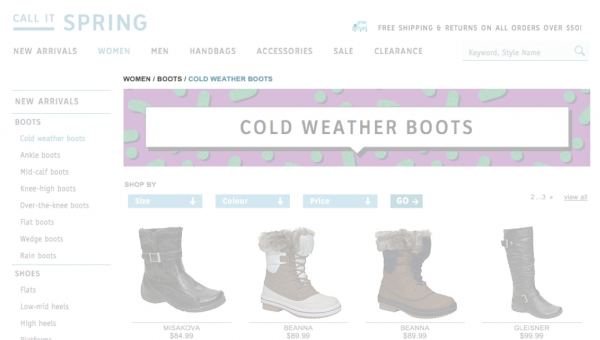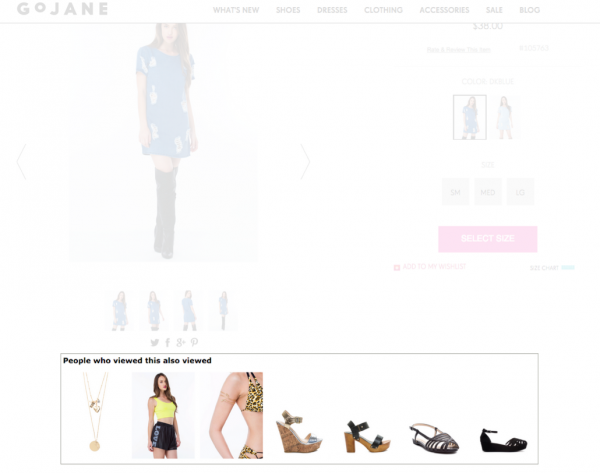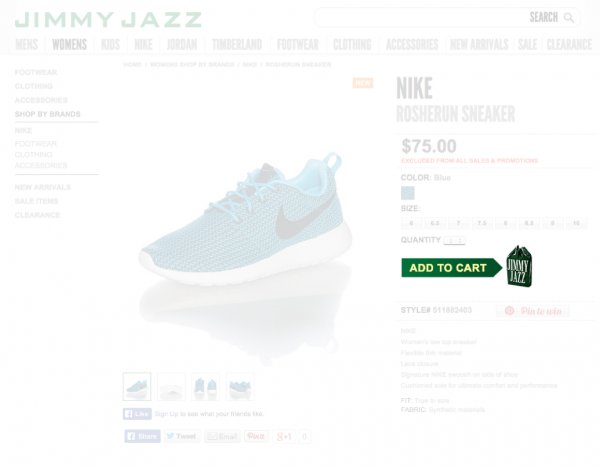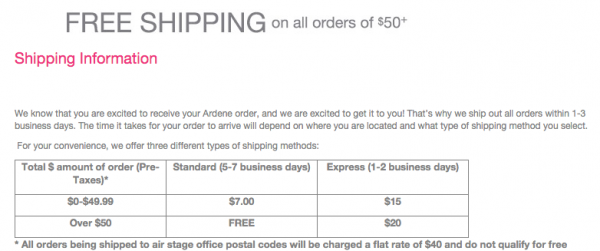As an eCommerce retailer, you have a lot to consider when trying to optimize and enhance your online store. Not only do you need to think about your own site, but you also need to take into consideration your competitors and current industry standards.
Below, Nextopia is happy to share four best practices that will help improve the overall functionality of your eCommerce site, helping increase customer loyalty and leading to better retail results.
1. Make Website Navigation Flawless
Navigation is a key component of a successful eCommerce site. The navigation bar, which typically resides at the top of the site, allows shoppers to easily browse through your site. You should make sure that your navigation bar is prominent and can be easily located, and that it appears on every page of your site, helping to maintain a consistent design.
Using self-explanatory and easy-to-understand navigation titles will ensure that your shoppers have a good idea of what they are going to see when selecting each navigation category. For example, let’s pretend you own an eCommerce woman’s clothing and accessory store. To help your customers quickly find the products that interest them, consider using categories such as “dresses”, “tops” and “bottoms” rather than the more generic “clothing”. You could take this even further by breaking the category “bottoms” down to “skirts”, “pants” and “shorts.”
It is important to note, however, that using too many navigation categories can overwhelm your shoppers. If you find your store has too many categories to fit across one navigation bar, consider implementing drop down menus that provide more detailed sub-categories. And remember that all navigation categories and sub-categories should be click-able links that lead directly to an appropriate product page.
Another aspect of a flawless navigation bar is the breadcrumb trail. Breadcrumbs remind your visitors of what page they are on and how they got there, allow them to easily navigate back to more general results, and have been shown to reduce bounce rates.

Your site’s navigation can be further enhanced by pairing these strategies with strong on-site search. On-site search gives visitors the ability to take control of the shopping experience and to locate products using their own terminology, instead of navigating through categories you have pre-determined. By offering shoppers an additional way to locate the products they desire, you are creating a comfortable and easy shopping experience, helping turn site visitors into dedicated customers.
2. Merchandise, Merchandise and Merchandise Some More!
Merchandising is an important element of every eCommerce website, and directly impacts the appearance and perception of the site. The most successful brick-and-mortar stores are masters of merchandising, using displays, demonstrations and unique signage to draw in shoppers and appeal to their wants and needs. Online stores must find a way to do the same, in order to keep shoppers on-site and encourage them to keep exploring.
Part of effective merchandising effort is ensuring all product images and descriptions are complete, professional and up-to-date. The images should be high resolution photos that show the details of a product. The descriptions should present all of the information that shoppers will need to feel comfortable making a purchase, and should answer questions and offer advice the same way that a sales associate would in a brick-and-mortar store.
Merchandising should happen on every page of your site, not just on the home page and product pages. By adding merchandising to your search result pages you will encourage shoppers to spend more time on site and increase conversions.
The most effectively merchandised result pages use banners at the top or side of the page to encourage purchases (“New for spring!”) or to provide other helpful information (“Free shipping over $100”). Product spotlight tags (such as “staff pick” or “on sale”) can help guide visitors to a purchase. Search result pages should also help instill confidence by clearly displaying prices, ratings and reviews.

Many eCommerce retailers also use merchandising on product pages to encourage cross-selling and/or up-selling by displaying a line-up of products that are similar to the one being viewed. This section is typically titled something like “People who viewed this also viewed” or “Commonly bought together”.

3. Integrate Impactful Calls to Action
Calls to action are typically used to motivate a shopper to take the next step towards a purchase. There are often several different calls to action on an eCommerce site, with one of the most common being an “add to cart” button. But instead of simply adding another generic button to your site there are ways to get creative!
Make the button a color that stands out and creates contrast, but be sure that the color goes with those already present on your site. It is also helpful to have some white space around the button in order to create a clean appearance and make it obvious where to click.
After color selection, choose the text you want on the button strategically. Use words that are going to inspire a shopper to take action and tell them what is going to happen when they click. The most effective way to understand which terminology resonates with your shoppers through A/B testing, as there really is no way to know what is going to appeal to your shoppers until you try it. For example, you might want to test a button that reads “add to bag” against one that reads “add to my cart.”

4. Simplify the Payment Process
As eCommerce technology advances, newer and faster payment methods are being developed. This means that there are several things that you can do now to simplify your payment process, helping decrease your cart abandonment rate.
Improving payment and shipping is all about providing options to customers, in order to make them feel comfortable.
Some online retailers require shoppers to register or create an account before making a purchase, which requires the visitor to enter a long list of information and often drives shoppers away from your site. Instead, give shoppers the option to check out as a guest and enable those shoppers who don’t want to provide personal information a chance to become a dedicated customer.
Customers are going to have preferences about how they want to pay, so accepting different forms of payment is a necessity. Many retailers are now adding PayPal to their site as an additional option for their customers.
Up to 37% of consumers avoid buying anything online because of shipping costs, so try reducing this barrier by offering a variety of shipping options. Many retailers provide free shipping that takes a little longer to reach its destination, or that requires a minimum purchase amount. More traditional shipping options are still provided for customers who are willing to pay more for faster delivery. While offering free shipping is not realistic for every eCommerce retailer, it may be worthwhile to run a free shipping promotion for a certain amount of time, perhaps even for just one day.

Finally, customers want peace of mind and need to know their money is safe with you. Make sure that every step of the checkout and payment process has visible trust seals and signals.
In the end, taking the time to know who is visiting your site, whether that is through a thorough Google Analytics analysis, surveys or A/B testing, it is worth it. Understanding your customers and creating a shopping experience based on their preferences will improve the overall functionality of your site, as well as your key metrics.
Source:
http://www.nextopia.com/resources/infographics/free-shipping-day.html
About the author:
Sanjay Arora is the Founder & CEO, Nextopia Software Corporation.

